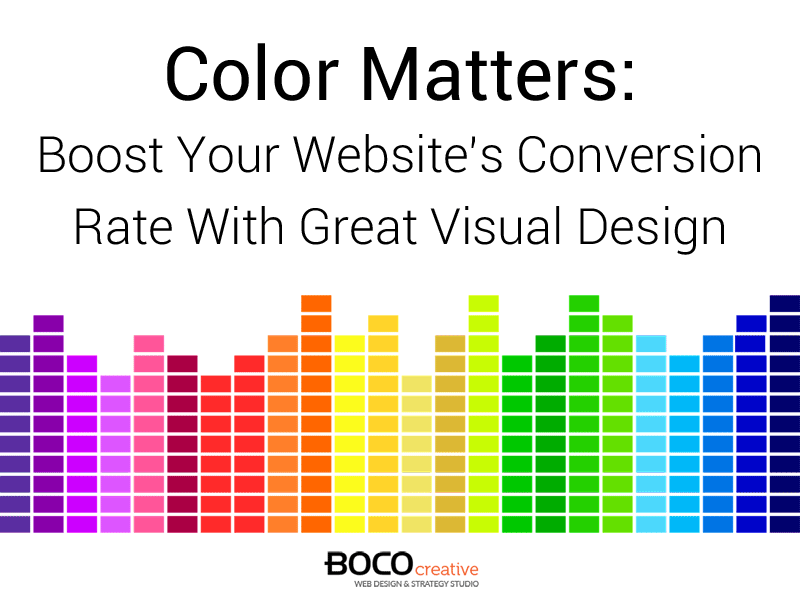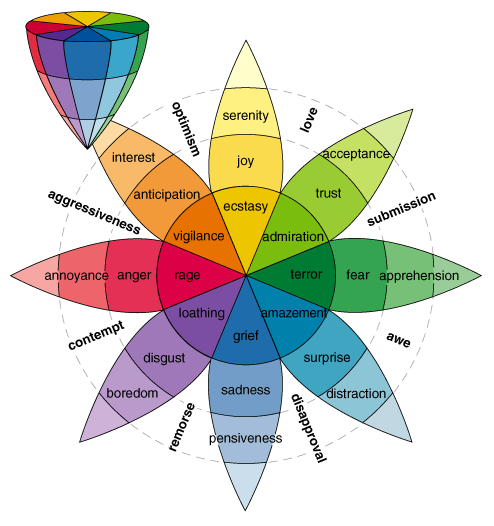
When it comes to website design, first impressions matter. Studies show that it takes much less than a second for a visitor to form an opinion about your website.
While this first impression depends on many factors, visual appeal of the site is the biggest influencer, followed by usability and credibility. Truth is, you need a great visual design or your site visitors just won’t stick around.
Great design instills trust in your business. Poor design and weak navigation cost website owners money:
- 94% of a website user’s first impressions are design-related
- 75% of consumers admit that they judge businesses’ credibility based on their website design
- 42% of website shoppers base their opinion of a website on overall design alone
- 52% of shoppers did not return because of overall aesthetics
- 38% of people will stop engaging with a website if the content/layout is unattractive
The Psychology of Color
Color plays a critical role in any visual experience, and it’s no different with website engagement. It is one of the main elements that greatly influences the decision to stay, purchase, or click through. Therefore, it’s smart to understand color psychology and learn how to use it to your advantage.
First, let’s list some important data regarding color:
- color increases brand recognition by up to 80 percent
- 85% of shoppers say that color is the primary reason for buying a product
Like This Post?
Subscribe to get more posts like this delivered straight to your inbox.
[yikes-mailchimp form=”1″]
Color evokes emotions, and connecting emotionally with your audience is how you make the sale. Whether with calming effect of blue or the exclusivity of black, colors elicit various emotions that will affect your conversion rate.
While there are gender, cultural, and demographic differences in the way colours are interpreted, choosing a color palette that matches your brand personality and appeals to your target audience is vitally important.
Colors have different associations. In North America:
- Red implies passion, energy, urgency and action, it also stimulates appetite, suggests warmth and heat.
- Orange is seen as the color of innovation and modern thinking, fun and youth; it’s often used as a call to action color (subscribe, buy, sell); it attracts impulse shoppers.
- Yellow is optimistic, warm and friendly, and it’s often used to grab attention.
- Blue invokes trust and security, professionalism and integrity; it’s the most common color for business websites as it suggests authority and success.
- Green suggests wealth, nature, growth, money; it’s the easiest color for eyes to process
- Purple is soothing and calming, royal and luxurious; it’s often used in beauty and anti-aging products; it’s associated with wisdom, dignity, religion, and wealth.
- Black implies exclusivity, luxury, power, but it’s also associated with death and dark power; it attracts impulse shoppers.
- White is associated with purity, cleanliness, and simplicity.
- Pink is soft and feminine, fun and flirty, and is used to market products to women.
- Brown is masculine and is often used for products associated with rural life and the outdoors.
Here’s a color wheel by Robert Plutchik showing the emotions that various color shades evoke.

Choosing the Right Color Scheme For Your Website
A good website design should never be based on your favorite color, or on a gut feeling. Instead…
Know Your Target Market
- Choose color and design that appeals to your target audience, so you can make a memorable connection, and stand apart from your competition.
- Who is your target market – are they young, old, high income, low income, male or female? A good website design is one that always put its audience first. Select colors based on your target audience – a website catering to female millennials will differ in color from websites targeting middle-aged men. Different colors appeal to different sexes and age groups – choose wisely.
- Before you get down to web design specifics, a market research should be done thoroughly to understand the target market’s color responses.
- Use color psychology (the science of color associations outline above) to elicit particular response – namely increase traffic and conversions. It’s all about connecting with your audience emotionally and colors facilitate that beautifully.
- Use color relevant to your business, product or industry – a spa will use different colors than a law firm or a travel agency.
Play It Safe And Focus On User Experience
- Start with safe colors like blue, beige or green instead of strong and powerful colors like purple or orange.
- Use contrasting colors, but with care – use brighter colors to make elements “pop” but be careful not to clutter and overuse strong colors as this may create a jarring effect.
- Focus on readability and usability – design is the background, text content should still take center stage.
- Use colors to guide visitors attention to calls to action and drive user experience.
Good Design Matters to Your Bottom Line
All said and done, there really are no hard rules when it comes to choosing a color scheme for your website, or brand for that matter. Effective color design is largely subjective, so it’s important to test, change, and test again.
However, there’s no doubt that good design pays off. In today’s crowded and highly competitive landscape, it’s critical to stand out, grab, and hold the attention of your target visitor.
Invest in design – it’s what matters the most for pulling users in.

Lukasz Sobczuk
Great informative article – I got plenty of ideas from your post. Colors can have so many different meanings depending on location and cultural differences — even subcultures within certain groups can assign new meanings to colors.
Keep up the good work!